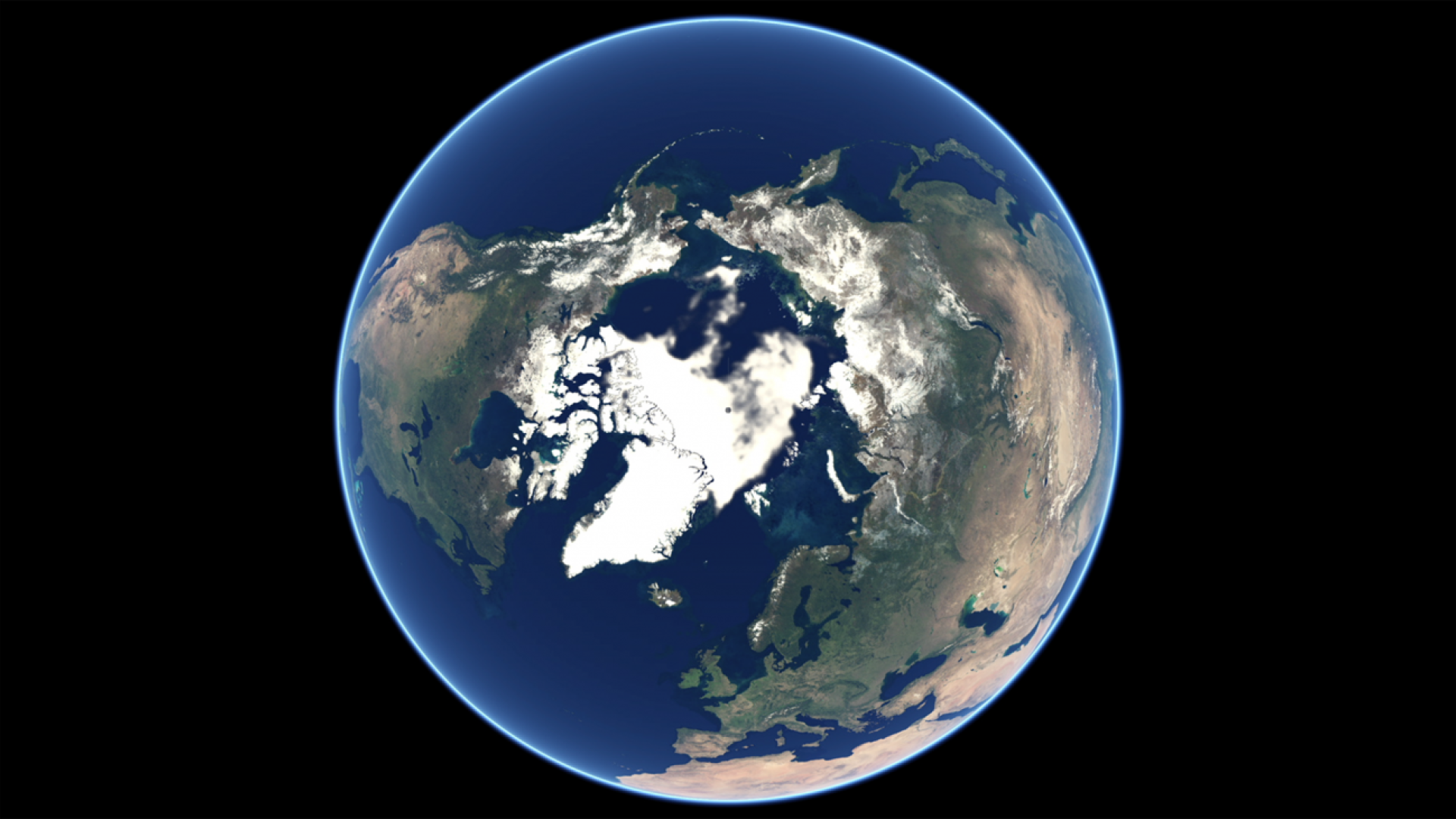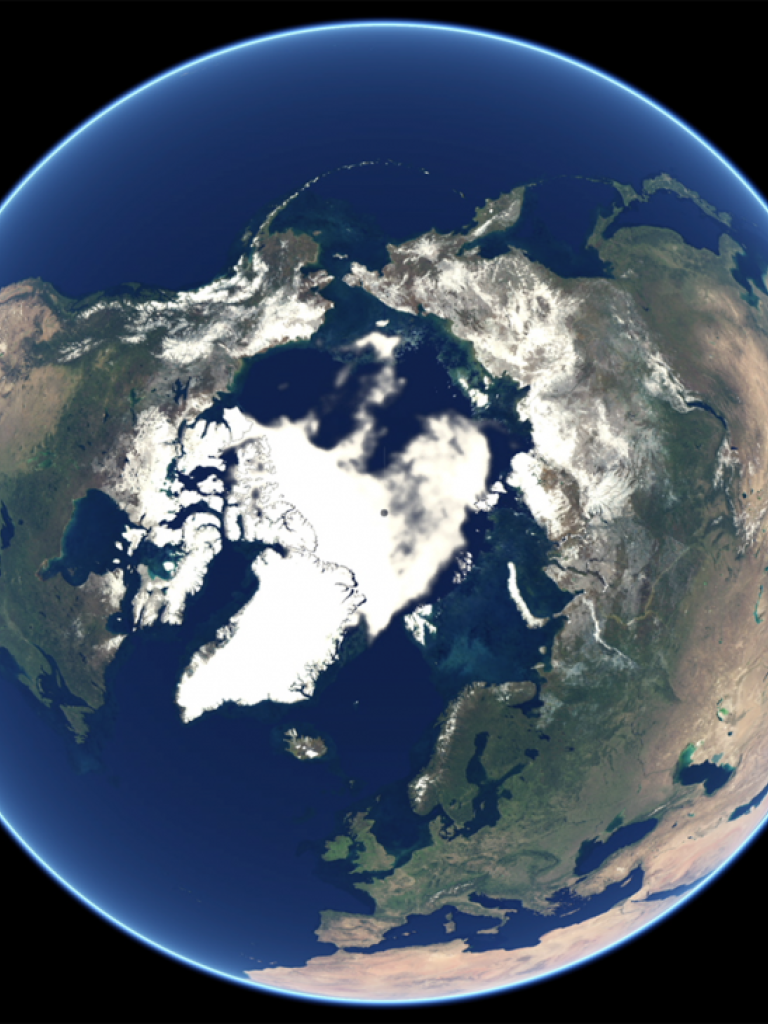Jupyter Notebook competition
A new competition to develop new Jupyter notebooks to help people work with Copernicus data starts today and runs until 4 September 2022.

Thomas Lavergne from MET Norway talks about tracking the movement of sea ice from space and why it’s so important, not least for polar bears.


15 March 2021
26 June 2017

Yes, it does. Pushed by winds and ocean currents, sea ice can move tens of kilometers a day. This motion can swiftly close or open sailing routes, locally deform sea ice to open leads or pile ridges. It plays a part in the sea ice mass balance over entire basins. To measure sea ice motion with satellites is important both for safe navigation, for weather forecasting and for climate monitoring.
For example, consider the sea ice situation in the southern Beaufort Sea on 1 June this year, as shown on the map to the left. It started to be ice free already mid-May, which has only started happening in the last five years.
Now, because we have maps of sea ice drift the early stages of the opening in the Beaufort Sea ice in 2017 can very well be monitored, and one could say predicted.

The animation below is a sequence of the daily OSI SAF sea ice drift product from early to mid-May this year. The black and purple vectors are the sea ice motion vectors as retrieved by the product, while the blue to white background illustrates where the sea ice is. The animation is zoomed over the Beaufort Sea, close to Canada.
As you can see on the animation around May 8 to 10 there is this huge sea ice fracture along the coast of Banks and Prince Patrick islands (Canadian Arctic Archipelago). This is where some of the thickest Arctic sea ice is found and it takes a lot of motion to create such an opening.
Later in the animation, from the 12th May onwards, the ice motion increases close to mainland Canada (to the left on the map). Sea ice is then pushed into the Arctic Ocean and the southern Beaufort Sea starts to become ice free for the season.
The ability to see both sea ice cover (the white-blue background color) and sea ice drift (the arrows on top) at the same time makes it easier to follow what has happened. The first fracture event was actually illustrated on Twitter by Prof. Lars Kaleschke at the University of Hamburg.
The huge sea ice fracture widened and a split occurred along the coast of the Canadian Arctic Archipelago, well visible in recent AMSR2 data pic.twitter.com/C7JLLyviR1
— Lars Kaleschke (@seaice_de) May 10, 2017
The recent upgrade of the OSI SAF ice drift product is a long awaited one. The original product was first operational in late 2009 and it covered the Arctic Ocean and only during winter (October through April). A few years later it was upgraded to also process ice motion vectors over Southern Hemisphere sea ice, but still only during the (austral) winter months.
With this new release, the OSI SAF ticks two major requirements of the user community. First, we extend the processing to cover all months of the year (both winter and summer, at the two poles). Second, we start distributing maps of uncertainties with the product, providing regularly updated information on its expected accuracy, at any time and place.
It is noticeable that the processing of motion vectors during summer is possible thanks to accessing near-real-time data from the Japanese Advanced Microwave Special Radiometer - 2 (AMSR2) on board JAXA’s GCOM-W1 mission, launched in 2012. This is thanks to the finer resolution of the AMSR2 images compared to similar U.S. or European satellite sensors.
To our knowledge, this is the sole operational, near-real-time, fully global, year-round ice drift product that is shipped with uncertainties. The EU Copernicus Marine Environment Monitoring Service (CMEMS) also has a fine-resolution sea ice drift product based on Sentinel-1 SAR data, which is also doing a fantastic job at monitoring ice motion. Synergetic use of the two products could offer the best information at hand.
This is a tough one. The target is and has always been coupled ocean and ice forecasting models, that can ingest such satellite products through data assimilation and hopefully improve their forecasts. I know that the EU CMEMS Arctic Marine Forecasting Center (ARC MFC, run at MET Norway in collaboration with NERSC in Bergen) assimilates the OSI SAF product.
Until now it has proven difficult to show an improvement of the forecasts skills by assimilating ice drift observations. But maybe now that we ship maps of uncertainties with the product it will trigger new developments? Maps of uncertainties have been a key requirement by the Data Assimilation people in decades. Now they have them!
Other usage areas I know of are in off-line studies like validating models, tuning model parameters, planning on-ice campaigns, etc…
And last but not least, one of the key interests for agencies and scientists is to study climate change. For Europe, we are working towards producing a global, long-term climate data record for sea ice drift based on our algorithms. That will be a unique data record for studying climate trends in polar sea ice motion, and maybe link them to other observations like the reduction of Arctic ice cover, the tendency towards thinner ice, or changes in the atmospheric circulation patterns. Even the polar bears have to adapt to the faster sea ice “treadmill”, researchers at USGS and University of Wyoming report.
To find out more, check also this post on polar ice here.